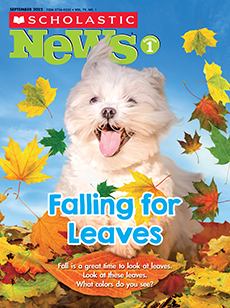A guide for using our resources
Children will identify different animals and their babies.
Science Focus: animals and their offspring
CCSS (and states that have similar standards): RI.1.1, RI.1.8, L.1.4, RF.1.3, W.1.2, RL.1.1
Simple, spectacular ideas to boost your lessons.
Paired Text: Are You My Mother? by P.D. Eastman
Paired Text: Are You My Mother? by P.D. Eastman
- In this classic story, a baby bird searches for its mother by asking a variety of animals the title question.
- Repetitive text and charming pictures make this book a perennial favorite.
Shared Writing: Baby Animal Names
Shared Writing: Baby Animal Names
- Make a T chart. Label the left side Adult and the right side Baby. Then make a list, starting with the animals from the issue: chameleon/hatchling, bear/cub, frog/tadpole, monkey/ infant, and bird/fl edgling.
- Then add more names kids might know, like dog/puppy, cat/kitten, and duck/duckling. You can also introduce some names kids might not know, for instance, a baby kangaroo is called a joey, a baby mouse is called a pinkie, and a baby porcupine is called a porcupette!
Hands-On Activity: Animal Matching Game
Hands-On Activity: Animal Matching Game
Skill: matching and memory
Materials: Baby and Adult Animal Cards skill sheets, crayons, scissors
- Give each pair of children a set of the Baby and Adult Animal Cards skill sheets.
- Let kids work together to color in the animals and cut out the cards.
- They can take turns matching each animal with its baby. For an extra challenge, have them fl ip the cards over to play concentration.
